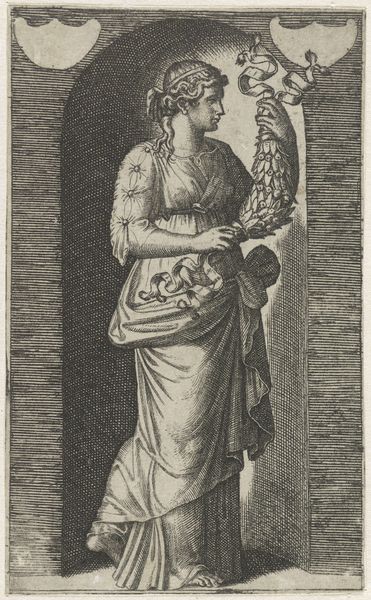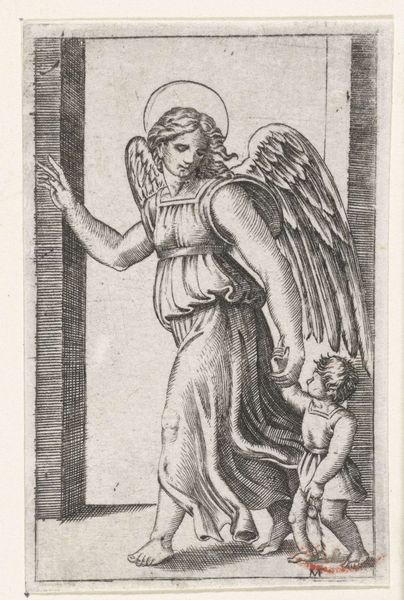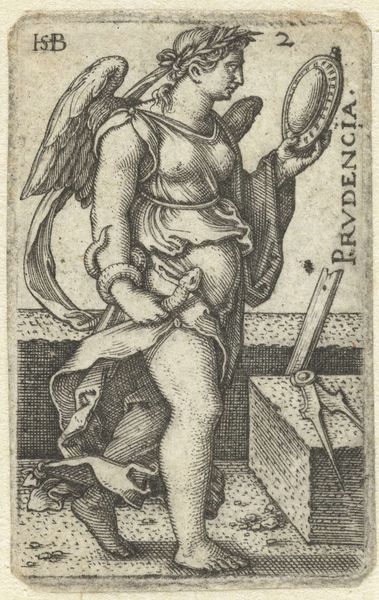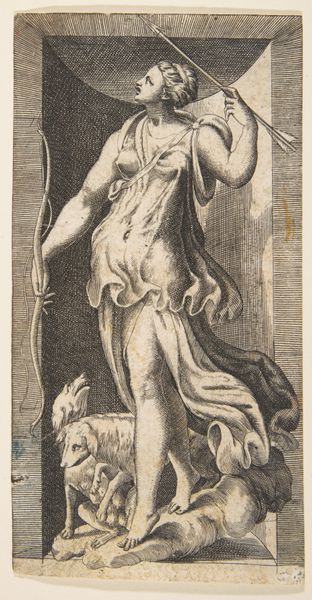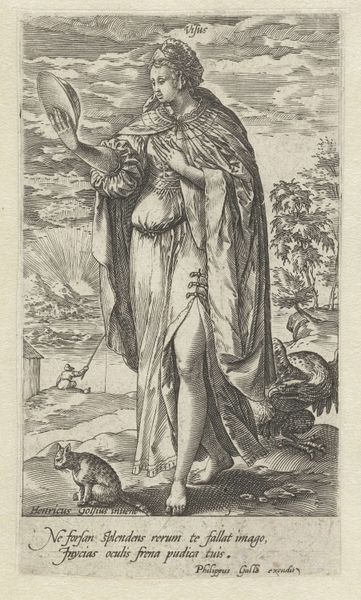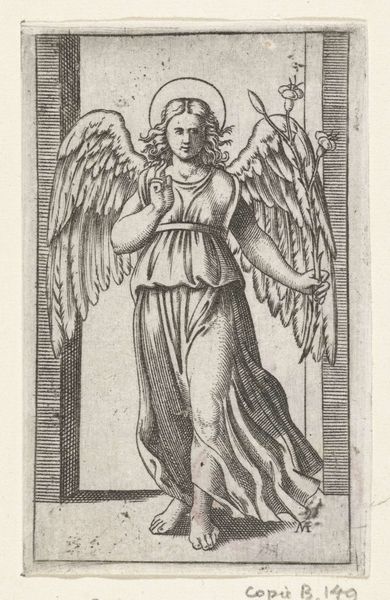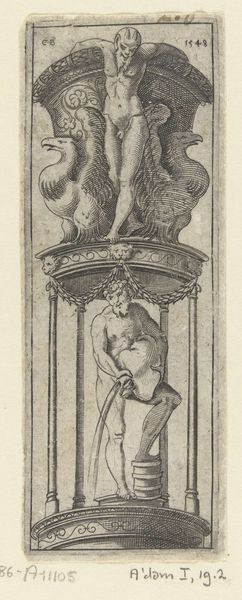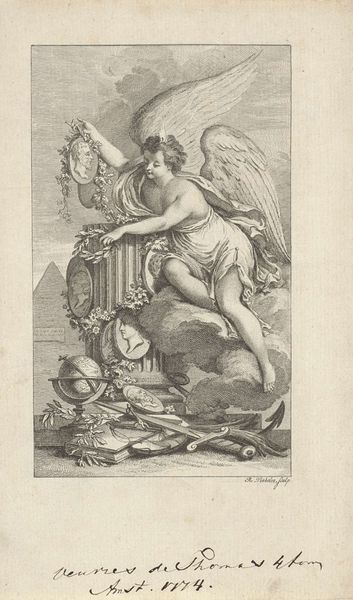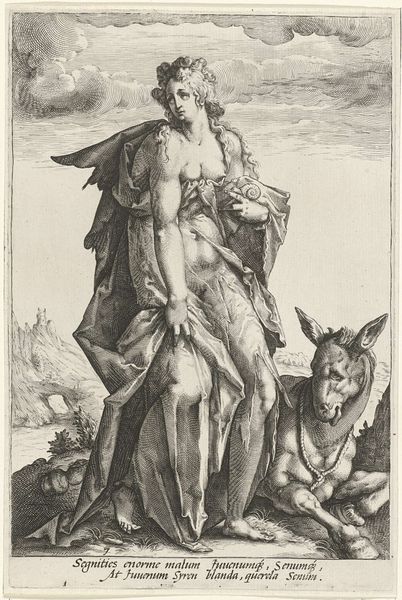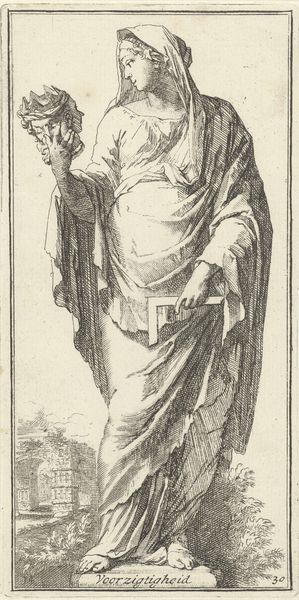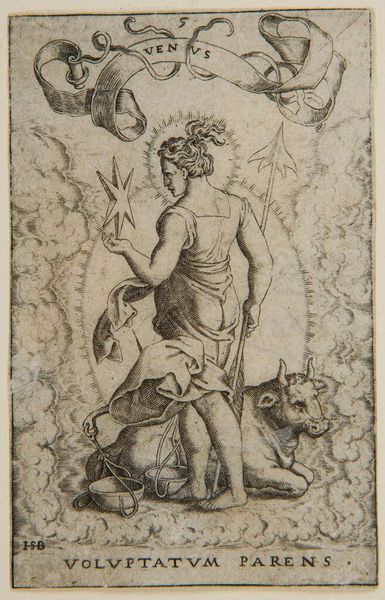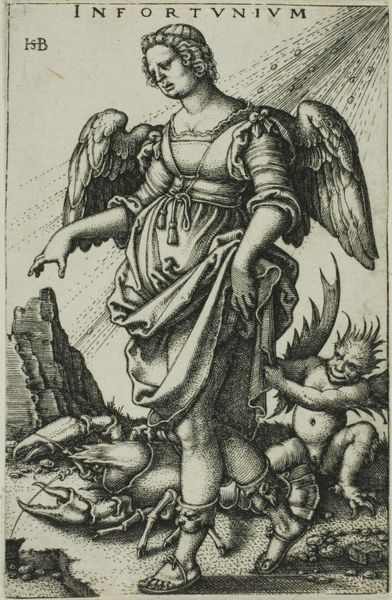
print, engraving
#
allegory
# print
#
old engraving style
#
figuration
#
11_renaissance
#
line
#
northern-renaissance
#
engraving
Dimensions: height 83 mm, width 54 mm
Copyright: Rijks Museum: Open Domain
Georg Pencz created this print called 'Envy' using etching sometime between 1500 and 1550. It's a powerful depiction of one of the seven deadly sins, reflecting the moral concerns of the Northern Renaissance. Pencz was a German artist, working at a time when religious and social upheaval was challenging established norms. Envy, as portrayed here, isn't just personal jealousy; it embodies a broader social critique. The winged figure, representing envy, clutches a heart, symbolizing the destructive nature of this sin. Notice the dog at her side, a traditional emblem of envy, gnawing on a bone it can never fully consume. The print, made during the Reformation, speaks to the anxieties of a society grappling with new ideas and shifting power structures. Artists at the time, often supported by religious institutions, were affected by the new emphasis on personal piety. To understand this work more deeply, one could explore religious texts of the period, moral treatises, and the biographies of artists like Pencz. Art like this reflects a time of immense social and institutional change, reminding us that artistic expression is always embedded in a specific historical context.
Comments
No comments
Be the first to comment and join the conversation on the ultimate creative platform.

